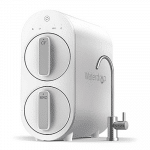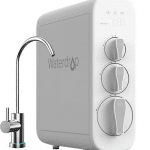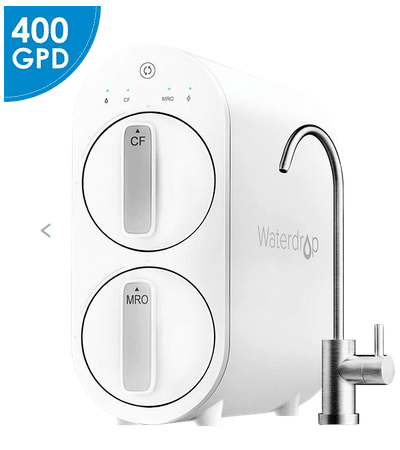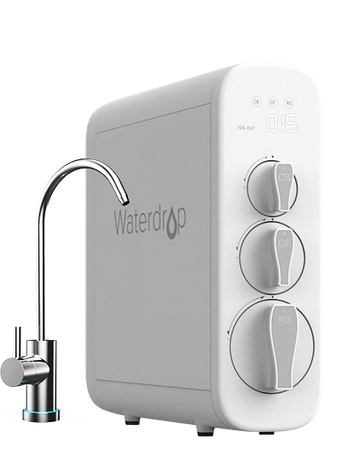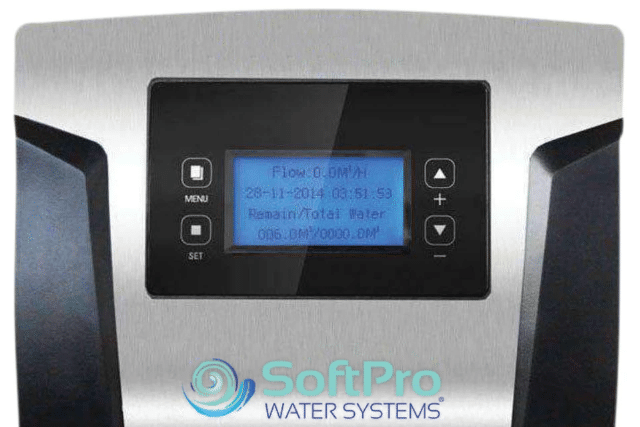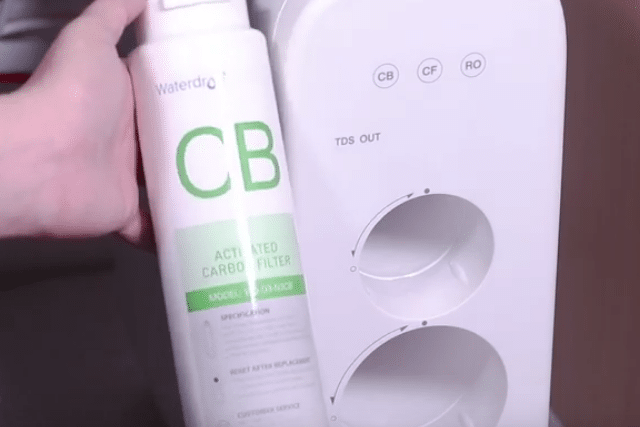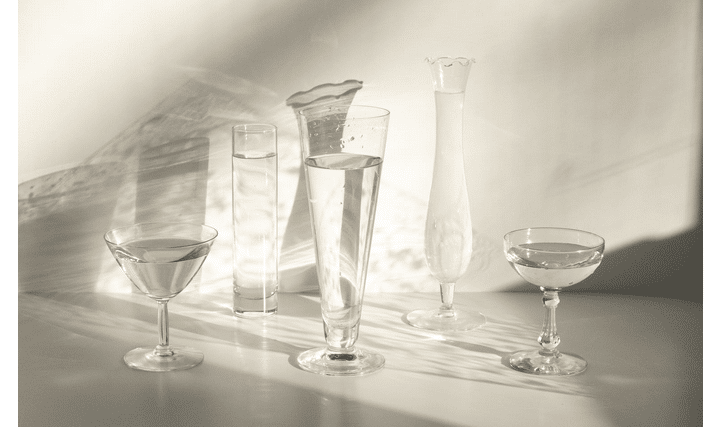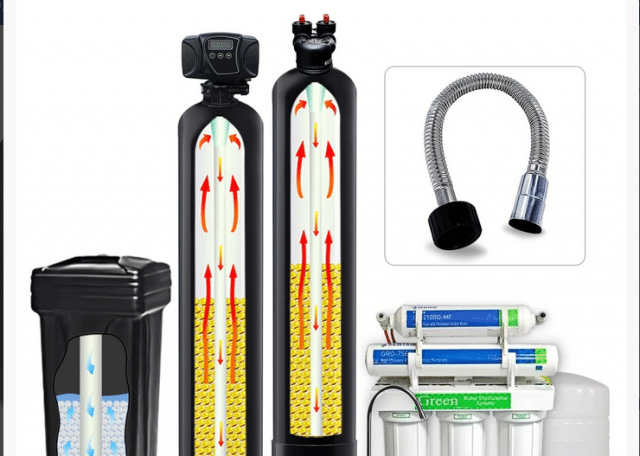Waterdrop Filters Review 2022 (Waterdrop G2 vs G3)
Waterdrop G3 is largely an upgrade of Waterdrop G2. Both are portable water filtration systems whose purpose is to make sink water safe and more pleasant to drink.
The main difference between Waterdrop G2 vs Waterdrop G3 is in terms of composite filters. With Waterdrop G2, we get 2 composite filters.
On the other hand, with Waterdrop G3, we get 3 composite filters.
Another key difference is the number of filtration stages. With Waterdrop G2, it is a 5-stage filtration. With Waterdrop G3, it is a 7-stage filtration.
The end result (in either case) is sink water that looks, tastes, and smells better than the default. What Waterdrop seems to have done is identify the issues that were unsatisfactory in Waterdrop G2. It has then resolved – or at least reduced – those issues in Waterdrop G3.
Waterdrop G2 vs G3 Comparison
Why use water filtration systems?
People tend to have major concerns about the purity and safety of the water that comes out of taps. Water filtration systems – including the Waterdrop G2 and G3 in question here – attempt to address those concerns.
These water filtration systems are fitted right under the sink. They, therefore, filter the water directly as it comes from the faucet.
Instead of the water coming from the faucet straight into the user’s glass, it first passes through the filter.
In the process, the impurities in it (both visible and invisible) are gotten rid of. The end result is water that one can drink with the better assurance of purity and safety.
Main features: Waterdrop G2 vs G3
The main features that set Waterdrop G2 apart from Waterdrop G3 include:
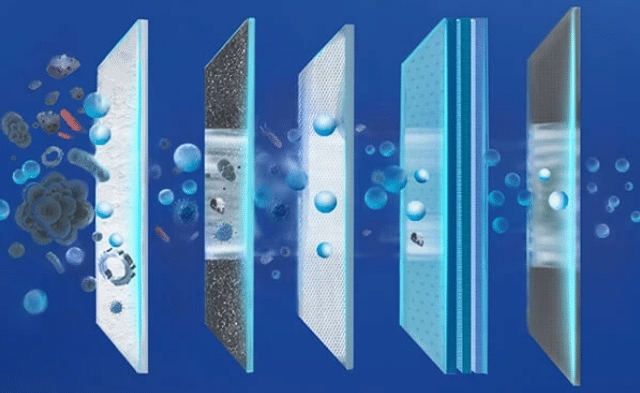
Number of composite filters
In the case of Waterdrop G2, the number of composite filters is 2. Conversely, in the case of Waterdrop G3, the number of composite filters is 3. This has implications for performance.
Given the fact that Waterdrop G3 has more composite filters, it ends up delivering a somewhat better filtration performance.
Granted, Waterdrop G2’s filtration performance is quite good to start with. But Waterdrop G3’s filtration performance is even better.
Water filtration stages
In the case of Waterdrop G2, the number of filtration stages is 5 (based on the 2 composite filters). Conversely, in the case of Waterdrop G3, the number of filtration stages is 7 (based on the 3 composite filters).
The upshot is that the Waterdrop G3 ends up delivering a seemingly better filtration process.
For most people’s needs, Waterdrop G2’s filtration is good enough. But for those who get to experience Waterdrop G3’s performance, it is even better.
That is especially with regard to the extent to which water taste is improved. Also with regard to the water flow.
Presence of smart filter life indicator
In the case of Waterdrop G2, the filter life indicator is basic. Conversely, in the case of Waterdrop G3, you find a smart filter life indicator. The latter is more sophisticated.
This means that if you have the Waterdrop G2 system, you can tell earlier when the filter needs replacement.
And that is crucial because the efficacy of the filtration system depends on the filter’s power.
If the filter’s power gets exhausted without you knowing, you could end up drinking impure water.
To be sure, both Waterdrop G2 and Waterdrop G3 have filter life checking mechanisms.
With both, you can easily tell when the filter is about to get exhausted. The only difference is in that the system for doing so in Waterdrop G3 is ‘smart’ and hence somewhat better.
Noise (for reverse osmosis filtration)
One of the key improvements made in Waterdrop G3 is the inclusion of anti-vibration pads.
As we all know, when water filtration systems are working through the reverse osmosis mechanism, they make some noise.
This noise is not always desirable. Many users of these systems have for long wondered if anything could be done about the noise.
Waterdrop responded by including anti-vibration pads in Waterdrop G3.
It is not really that Waterdrop G2 was very noisy to start with. Compared with other filtration systems, it is still remarkably quiet.
But with the inclusion of anti-vibration pads in Waterdrop G3, the manufacturers have made the situation even better.
The upshot is that Waterdrop G3 is much quieter than anyone would expect a water filtration system to be.
Stability (for reverse osmosis filtration)
Besides reducing the amount of noise, the anti-vibration pads included in Waterdrop G3 also enhance stability.
Waterdrop G2 still had decent stability, the noise during reverse osmosis filtration notwithstanding. But the stability is even better with Waterdrop G3: thanks to the anti-vibration pads.
Price
The improved features in Waterdrop G3 have come at a cost. The end result is a somewhat higher price for Waterdrop G3, in comparison to Waterdrop G2.
In exchange for the slight extra cost, you get (the aforementioned) one more composite filter and 7-stage filtration.
That alongside less noise, more stability, a smart filter life indicator… among other things.
The main features that are common for both Waterdrop G2 and Waterdrop G3 include:
Tank-less design
Both Waterdrop G2 and Waterdrop G3 have tankless designs. So water goes straight from the faucet to filter to glass.
In other words, no risk of water that had been filtered being contaminated in the storage tank of such a tankless reverse osmosis system. But tank-less design also has a downside.
It means that there is no ‘reserve’ of filtered water to tap into. You have to wait for water filtration to happen in real-time when you need it.
This can mean waiting for 10 to 15 seconds to fill a glass. That is a period most people are quite at ease with.
Compact size
Waterdrop G2 and Waterdrop G3 have compact designs, compatible with almost all sink sizes.
There doesn’t seem to have been much of a size reduction in Waterdrop G3 core size. It would seem that in the G2, Waterdrop had gotten to the smallest size for an under-sink water filtration system.
The compact size makes for easier installation. The only downside maybe for individuals who operate on ‘optics’. Such people may (mistakenly) imagine that bulkier filtration systems are more powerful.
Easy installation
Waterdrop G2 and Waterdrop G3 both have designs that make them very easy to install. Both come with two main components: a base mounting and the filter mounting.
Installation in both cases is a matter of first securing the base mounting onto an appropriate space.
Then you fix the filter mounting and twist in the filter cartridge, to complete installation.
Fast filtration
Waterdrop G2 and Waterdrop G3 both have decent water filtration speeds. In spite of Waterdrop G3 having three composite filters, that doesn’t seem to have a great bearing on filtration speed.
With both Waterdrop G2 and Waterdrop G3, you have to allow for around 12 seconds. That is what it takes to fill a standard-size glass, on average.
Long filter life
Waterdrop G2 and Waterdrop G3 both have decent filter lives. A reverse osmosis filtration media should last around two years: whether in Waterdrop G2 or Waterdrop G3.
Similarly, an activated carbon block filtration media should last around one year – again whether in Waterdrop G2 or Waterdrop G3.
How To install: Waterdrop G2 vs G3
Installation is generally the same for both Waterdrop G2 and Waterdrop G3. It is a three-step process.
The first step is that of securing the filtration system’s mounting base where it should go (under the sink).
The second step is that of fixing the filter base onto the mounting base.
The third step is that of twisting the actual filter cartridge to the filter base. After doing this, all that remains is flushing the system. Then you can start using it straight away.
How They Work: Waterdrop G2 vs G3
There are two key differences between Waterdrop G2 and Waterdrop G3 in terms of how they work.
Firstly, we see that Waterdrop G2 works based on two composite filters. On the other hand, Waterdrop G3 works based on three composite filters. In that regard then, it is clear that Waterdrop G3 is an improved version of Waterdrop G2.
Secondly, we see that Waterdrop G2 filters water via a 5-step process. On the other hand, Waterdrop G2 filters water via a 7-step process. Again, in that regard, it is clear that Waterdrop G3 is an upgrade of Waterdrop G2.
On the other hand, there are lots of similarities in how Waterdrop G2 and Waterdrop G3 work. Both deliver water that is clear of all impurities. Both also deliver water that is clear of odors and tastes.
Waterdrop G3 may have slightly better filtration performance. That is thanks to its three composite filters and its 7-step filtration process. But both do make otherwise questionable water to be potable.
Waterdrop G2
What we like:
- Cheaper price. Waterdrop G2 costs considerably less than Waterdrop G3. Whereas Waterdrop G3 may have superior features to justify the higher price, Waterdrop G2’s performance is still decent. This makes Waterdrop G2 ideal if you have very limited funds. That is if you have fewer funds, yet you still want a reasonably good water filtration system.
- Less complex system. Waterdrop G2 is less complex, in comparison to Waterdrop G3. That is with regard to things like a number of composite filters (2 vs 3) and filtration steps (5 vs 7). The fact that Waterdrop G2 is less complex means that it may be less prone to malfunctions. And should it ever malfunction, identifying and sorting out the issue should be somewhat easier.
- Decent filtration results. This manifests in a couple of ways. First is to the extent to which Waterdrop G2 filters the water. It not only makes the water free of solid impurities like rust and sand but also clears odors and tastes. The second way is through filtration speed. To the extent that Waterdrop G2 can deliver a glass of freshly filtered water in about 12 seconds is remarkable.
- Long filter life. With Waterdrop G2, you don’t have to keep on replacing the filter cartridges. It is not uncommon for a Waterdrop G2 filter to last between 6 and 24 months, depending on usage. This saves you money in the long run.
What we don’t like:
- Less sophisticated filter life indicator. The filter life indicator tells you whether or not your filter still has power. It, therefore, tells you whether or not you need to replace it. But the filter life indicator in Waterdrop G2 is more rudimentary, in comparison to the one in Waterdrop G3.
- Only 2 composite filters. This is as compared to the 3 composite filters to be found in Waterdrop G3. It has a bearing on the extent to which the respective systems are able to filter water. While Waterdrop G2 delivers good filtration results, Waterdrop G3 delivers even better.
- Lacks anti-vibration pads. The anti-vibration pads would serve the purpose of reducing noise and increasing stability. Whereas Waterdrop G3 has such pads, Waterdrop G2 lacks them. Consequently, Waterdrop G2 makes slightly more noise during reverse osmosis filtration than G3. Further, Waterdrop G2 is slightly less stable (during reverse osmosis filtration) than Waterdrop G3. Read more on waterdrop g2 ro review
Waterdrop G3
What we like:
- More sophisticated filter life indicator. The filter life indicator found in Waterdrop G3 is much easier to make sense of. It also looks more elegant. Thus whereas the filter life indicator in Waterdrop G2 serves the purpose, the one in Waterdrop G3 is even better.
- Higher filtration performance. Compared to Waterdrop G2, Waterdrop G3 filtration performance is somewhat better. This is on account of Waterdrop G3 having three composite filters (compared to 2 for Waterdrop G2). It is also on account of Waterdrop G3 employing 7-stage filtration, as compared to 5-stage filtration for Waterdrop G2. Ultimately, water coming from Waterdrop G2 looks and tastes very good. But the water coming from Waterdrop G3 looks and tastes even better. In other words, Waterdrop G3 goes the ‘extra mile’ infiltration.
- Good filter life. This is mainly attributable to the filtration media used in Waterdrop G3 filters. Compared to other similar filtration systems in the market, Waterdrop G3 requires less frequent filter changes.
- Comes with anti-vibration pads. Thanks to the anti-vibration pads, Waterdrop G3 ends up being somewhat less noisy than G2. This is noticeable during reverse osmosis water filtration. Further, thanks to the anti-vibration pads, Waterdrop G3 ends up being more stable than G2. The stability can have some slight positive impact of filtration results. Moreover, stability can have a slightly positive impact on the filtration system’s durability.
What we don’t like:
- Higher price. Because Waterdrop G3 is an upgrade of G2, it typically costs slightly more. Thus if you are looking for a lower-budget filtration system, Waterdrop G2 may be a better choice. But if you want premium features (at a slightly higher price), Waterdrop G3 is the system to go for.
- More complex system. This is a function of Waterdrop G3 having more composite filters (3) and more filtration steps (7). Being a more complex system means that it may be hard to pinpoint malfunctions when they occur. It also means that it may be hard to resolve malfunctions when they occur.
- Needs to be flushed regularly. The ideal situation is to flush it at least daily. The flushing doesn’t take much time or effort. It can nonetheless feel like a hectic task to some people. Read more on waterdrop g3 under sink water filter
FAQs
Is Waterdrop G3 better than Waterdrop G2?
Waterdrop G3 is largely an upgrade of G2. This means that Waterdrop G3 has features that are slightly better than those in Waterdrop G2.
Where it matters, G3 has more composite filters and a more elaborate filtration process.
Thus while Waterdrop G2 is good, Waterdrop G3 is even better. That is the best way to put it.
Why is Waterdrop G3 costlier than G2?
The key reason why Waterdrop G3 is costlier than Waterdrop G2 is that G3 has more sophisticated features. Besides having more composite filters and a more elaborate filtration process, Waterdrop G3 also has anti-vibration pads.
And it has a better (smart) filter life display screen… It is on account of these enhanced features that Waterdrop G3 comes at a slightly higher price than G2.
Should I upgrade from Waterdrop G2 to G3?
By all means, you should, especially if you want the better features that Waterdrop G3 comes with.
The slightly extra amount of money you have to pay for Waterdrop G3 is well justified by G3’s better features.
Perhaps you have been using a Waterdrop G2 system, and you feel the time has come to replace it? Then rather than going for another Waterdrop G2, you can opt for G3.
If nothing else, you will get better filtration results, less noise during reverse osmosis, and more stability.
Conclusion
Both Waterdrop G2 and G3 have their pros and cons. Waterdrop G3 seems to have been designed later – after Waterdrop G2 had been in use for a while.
Thus, Waterdrop G3 seems to have been meant to be an improvement on Waterdrop G2. It has somewhat better features and better performance.
But then again, Waterdrop G3 costs slightly more than Waterdrop G2. All said and done, if you can afford to pay, then the slighter higher price for Waterdrop G3 is justified.
Waterdrop G3 has better features and better performance to justify its somewhat higher price. But if your budget is very modest, Waterdrop G2 is still a very decent water filtration system.
On our part, we would recommend both Waterdrop G2 and Waterdrop G3.

